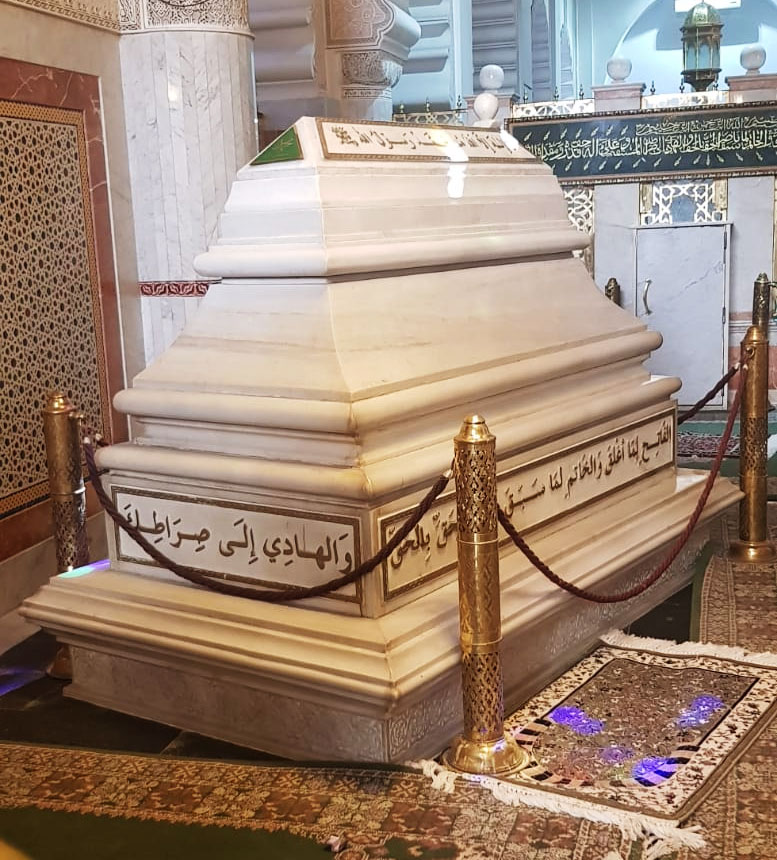
In the expansive tapestry of Islamic spirituality, certain souls shine with such brilliance that their light continues to guide seekers centuries after their earthly journey ends. Among these luminous beings is Shaykh Ahmad al-Tijani, a man whose connection to the Prophet Muhammad (peace and blessings be upon him) was so profound that it gave rise to one of the most influential spiritual movements in Islamic history.
Born in 1737 CE in the oasis town of Aïn Madi, Algeria, Shaykh Ahmad al-Tijani entered this world carrying a divine secret that would only be revealed decades later. His life story is more than just a historical account — it serves as an invitation to understand how profound spiritual realisation transforms not only the individual soul but entire communities across continents and generations.
From his earliest days, young Ahmad showed signs of exceptional spiritual ability. By the age of seven, he had already memorised the entire Qur'an—a feat that highlights both his remarkable intelligence and his profound inner connection to the Divine Word. But memorisation was only the start.
The young seeker immersed himself in the vast ocean of Islamic knowledge, encompassing jurisprudence, Prophetic traditions, Qur'anic interpretation, grammar, and literature. His teachers, themselves masters of their fields, recognised in him something rare—a student whose thirst for knowledge was matched only by his spiritual hunger. One of his instructors, Sidi Mabruk Ibn Ba'afiyya, guided him through the classical texts that formed the foundation of Islamic scholarship.
What set young Ahmad apart was not only his keen intellect but also his unwavering resolve. He often stated: "When I begin something, I never turn from it," highlighting a core spiritual principle that would shape his entire path—total dedication, full surrender, and an unyielding quest for divine truth.
By the age of twenty, Ahmad had become a recognised scholar, a jurist qualified to issue legal opinions. Yet his heart yearned for something more. Knowledge of the mind is precious, but knowledge of the heart—direct experience of divine reality—this was the treasure he truly sought.
In 1758, the twenty-one-year-old scholar left his hometown, driven by an irresistible inner calling. His destination was Fez, Morocco—the vibrant centre of North African Islamic civilisation, where the finest minds and purest hearts gathered to teach, learn, and worship.
In Fez, Ahmad sought out not just any teachers, but the people of actual spiritual realisation—those whose knowledge had been transformed by divine light into living wisdom. He studied under luminaries such as Al-Tayyib b. Muhammad al-Sharif, head of the Wazzaniyya Sufi order, and Sidi Abdullah b. 'Arabi al-Mada'u, who told the young seeker that God was guiding him by the hand.
These masters recognised in Ahmad what others might have overlooked. When Sidi al-Tayyib granted him permission to become a spiritual guide himself, the young scholar declined. His humility was deep—he understood that before guiding others, he must first perfect his own soul's journey. This is the mark of true spiritual wisdom: recognising that the most effective service to others begins with one's own transformation.
Another teacher, Sidi Muhammad al-Wanjili, made a prophecy that would shape Ahmad's path: his spiritual opening would come not in the cities of men, but in the silence of the desert. With this knowledge burning in his heart, Ahmad prepared for the next phase of his journey.
In 1773, at the age of thirty-six, Shaykh Ahmad set out on the sacred pilgrimage to Mecca. This was not merely a journey across geography but a voyage through the dimensions of spiritual reality. Every step carried him closer to the threshold of divine mystery.
In Algiers, he encountered Sidi Muhammad b. Abd al-Rahman al-Azhary, a master of the Khalwatiyya Sufi order. This meeting was transformative. The Khalwatiyya tradition emphasised rigorous spiritual discipline combined with profound mystical experience—a balance that would later characterise Ahmad's own teaching.
His journey continued through Tunis, where the ancient Zaytuna Mosque stood as a beacon of Islamic learning. There, he taught Ibn 'Atta Allah's Kitab al-hikam—a text of sublime spiritual wisdom. The Emir himself, recognising Ahmad's extraordinary qualities, offered him a lucrative permanent teaching position. But Ahmad declined. His heart belonged not to worldly security but to the divine quest. He could not be bound by dependence on political authority when he was seeking reliance on God alone.
In Mecca, after performing the sacred rites of pilgrimage, Ahmad encountered a mysterious saint from India—Ahmad b. Abdullah al-Hindi. This saint, who had taken a vow of silence, broke his silence for Ahmad alone, declaring: "You are the inheritor of my knowledge, secrets, gifts and lights." The saint predicted his own death with precision and directed Ahmad to seek out another master in Medina.
At the Prophet's tomb in Medina, Ahmad's heart overflowed with divine love. There, God "completed his aspiration and longing" to greet the Beloved Prophet (peace and blessings be upon him). This moment of spiritual communion at the Prophet's resting place foreshadowed the even more extraordinary connection that would soon be revealed.
He then visited Shaykh Muhammad Abd al-Karim al-Samman, a spiritual master of tremendous power and knowledge. Before Ahmad departed, al-Samman revealed a profound secret: Ahmad was destined to become al-qutb al-jami'—the comprehensive Pole, a saint who would stand at the pinnacle of spiritual realisation.
The prophecy of Sidi Muhammad al-Wanjili was about to be fulfilled. In 1784, in the remote desert oasis of Abi Samghun, something occurred that had no precedent in the history of Islamic spirituality.
The Prophet Muhammad (peace and blessings be upon him) himself appeared to Shaykh Ahmad Tijani—not in a dream, not in a vision of sleep, but in full waking consciousness. This was not a metaphorical experience or a symbolic encounter. This was direct, conscious communion with the Prophetic Reality.
The Prophet's words transformed everything: "I am your initiator on the Path. You are not indebted for any favour from the shaykhs of the Path, for I am your means and your support in the spiritual realisation. Leave the entirety of what you have taken from all the tariqas (spiritual orders)."
In this moment, the Tijaniyya was born—not from human transmission, not through traditional chains of teachers, but through direct divine appointment. The Prophet (peace and blessings be upon him) gave Ahmad a new wird (spiritual litany) and unlimited permission to train seekers on the path to God.
This revelation established the Tijaniyya's unique character: it is a path that traces not through human intermediaries but directly to the source of all spiritual light—the Prophet Muhammad (peace and blessings be upon him) himself.
The Prophet revealed to Shaykh Ahmad something even more extraordinary: he was the Khatm al-Wilayah al-Muhammadiyya—the Seal of Muhammadan Sainthood. This title does not mean that sainthood ends with him, for saints will continue until the end of time. Rather, it signifies that he occupies a unique spiritual station at the summit of saintly realisation, just as the Prophet Muhammad (peace and blessings be upon him) is the Seal of Prophets.
What does this mean spiritually? Imagine the spiritual hierarchy as a vast mountain, with countless peaks of varying heights representing the stations of the saints. The Seal of Saints occupies the highest peak—the one closest to the sun of Prophetic Reality. From this height, he receives light directly and reflects it to all other peaks below.
This is why Shaykh Ahmad said with perfect spiritual knowledge: "These two feet of mine are on the neck of every saint from the time of Adam to the blowing of the trumpet." These words shocked some listeners, but they express a spiritual truth: his beginning point on the path was above the ending point of all other saints (except the Companions of the Prophet). His starting place was their destination.
The great Andalusian sage Muhyiddin Ibn Arabi had written centuries earlier about the Seal of Saints, describing how he would appear in Morocco, specifically in Fez, and that people's denial of him would try him. Ibn Arabi even specified that his honorific title (kunya) would be Abu'l-Abbas—precisely the title by which Shaykh Ahmad was known.
Similarly, Shaykh al-Mukhtar al-Kunti, writing in the same era as Shaykh Ahmad, stated that the twelfth Islamic century (1722-1822 CE) would resemble the Prophet's century in many ways, including that it would contain the Seal of Saints just as the Prophet's era contained the Seal of Prophets.
All these prophecies, scattered across centuries, converged in one man, in one place, at one time: Ahmad al-Tijani, in Fez, in the twelfth Islamic century.
In 1798, Shaykh Ahmad and his closest companions settled permanently in Fez. By this time, his spiritual reputation had spread across North Africa like the fragrance of musk carried on the wind. When he entered the city, a delegation of scholars selected by Sultan Mawlay Sulayman met him.
The Sultan himself, after testing the authenticity of Ahmad's spiritual claims, became closely connected to the Shaykh. Their relationship was remarkable—a political leader submitting spiritually to a man who possessed nothing of worldly power but everything of divine knowledge. The Sultan wrote to him: "Your most blessed lines have reached us, and we praise God the Most High on account of what He has made special for us by them from the pleasure of the master, the Messenger of God (peace and blessings be upon him)."
The Sultan recognised in Shaykh Ahmad what many leaders fail to see: that actual authority comes not from armies or treasuries but from proximity to divine truth. The Shaykh embodied the principles of sacred law (Shari'a) while maintaining the ascendancy of the Prophet's path—a balance that attracted the reform-minded Sultan.
The Shaykh was given a magnificent house—the House of Mirrors—which became the first gathering place for his followers. This house, with its expansive courtyard decorated in blue and yellow tiles and its fountain at its centre, served as a sanctuary where hearts were polished and souls were refined through the remembrance of God.
In 1800, following direct instruction from the Prophet (peace and blessings be upon him), Shaykh Ahmad began construction of the Zawiya (spiritual centre) that still stands today as a beacon of divine light. This architectural masterpiece, funded by his followers and his own resources, became the mother zawiya of the Tijaniyya—a place where heaven and earth meet, where seekers from every corner of the world come to drink from the fountain of Prophetic love.
What did Shaykh Ahmad teach? What wisdom did he transmit from his direct connection with the Prophet?
At the heart of the Tijaniyya lies a simple but profound principle: constant connection with the Prophet Muhammad (peace and blessings be upon him). This is not merely sending blessings upon him as a ritual, though that is essential. It cultivates an active, living, transformative relationship with the Prophetic Reality—experiencing Him as a living guide, a spiritual presence, and a source of divine illumination.
The Shaykh taught that God's mercy is limitless and unbound by human understanding. He emphasised:
His teachings were preserved by devoted companions, particularly in the masterwork Jawahir al-Ma'ani (The Gems of Meanings), compiled by his close disciple Ali Harazem. This text offers profound insights into spiritual practices, theology, ethics, and the inner workings of the path.
Shaykh Ahmad attracted disciples of extraordinary calibre—men and women whose own spiritual realisation allowed them to carry his teachings to distant lands. Figures like Shaykh Ali Harazem and Sidi Muhammad al-Ghali became pillars of the Tijaniyya, establishing centres (zawiyas) and training new generations of seekers.
These disciples travelled to West Africa, where the Tijaniyya would flourish with remarkable vitality. They journeyed to the Hijaz, to Mauritania, to Sudan—anywhere hearts were ready to receive the Prophetic light. Through their efforts, the Tijaniyya became one of the most widespread spiritual movements in Islamic history.
What led to the Tijaniyya's rapid spread? Not through force or political power, but through the pure magnetism of divine love. When people encountered followers of the Tijani path, they witnessed something that words alone cannot convey—transformed hearts radiating a prophetic light, souls refined through constant remembrance, and lives aligned with the divine will.
The greatness of Shaykh Ahmad al-Tijani is not merely affirmed by his immediate followers but by the most outstanding scholars of later generations. Among these was Shaykh Muhammad al-Hafiz al-Misri (d. 1978), one of the 20th century's most respected masters of Hadith and Islamic scholarship, whose sainthood was recognised by followers of all Sufi traditions.
Shaykh al-Hafiz explained the concept of the Seal of Saints with clarity and wisdom:
"All the saints have agreed that the drinking place of the Seal of the Saints is the finest of all the drinking places of sainthood and that his followers drink from the wellspring which is beside companionship with the Messenger of God (peace and blessings be upon him)."
He addressed those who might doubt or question Shaykh Ahmad's claim:
"The Shaykh did not claim anything impossible, neither rationally nor scripturally. In any case, there must exist a man who occupies this rank, and he has the right to make himself known to people. The Shaykh has informed us that he holds this rank in a way that is exclusive to him and cannot be shared with others. We have believed him, and we are not of those who pay heed to mere words, regardless of who speaks them."
Shaykh al-Hafiz emphasised that we should take the testimony of righteous saints seriously, just as we accept the testimony of reliable narrators in other matters. Shaykh Ahmad's claim was unique because it was explicit and unambiguous: the Prophet (peace and blessings be upon him) himself, in a wakeful vision, informed him of his station. When asked if he was in a state of spiritual intoxication when making this claim, the Shaykh replied clearly: "No, rather I am aware, and may God be praised."
For those who still find the claim difficult to accept, Shaykh al-Hafiz offers wise counsel: maintain a good opinion of all saints, interpret their words charitably, and remember that divine grace is unlimited. "It does not befit a rational person," he wrote, "to make his personal feelings or desires the measure of his judgment, leading him to stray into the egregious error of belittling God's saints."
On a blessed day in 1815, at the age of eighty, Shaykh Ahmad al-Tijani's soul departed this world to return to its Creator. He left behind a well-established order, thousands of devoted disciples, and a spiritual legacy that continues to illuminate hearts across continents.
He was buried in the Zawiya he had built in Fez, and his tomb remains a place of pilgrimage and spiritual blessing to this day. Visitors come from Senegal, Nigeria, Morocco, Algeria, Sudan, Egypt, and many other lands—seekers who feel the magnetic pull of a soul that dwelled so close to the Divine.
His resting place is not merely a historical site. For those with inner vision, it is a threshold between worlds, a portal where the light of the Prophetic Way still shines brightly. Those who visit with sincere hearts often report profound spiritual experiences—a sense of presence, blessing, and being touched by something beyond this material world.
Today, millions of people worldwide follow the Tijani path. The Tijaniyya has become one of the most influential spiritual movements in Islam, particularly in West Africa, where it has shaped not only individual spiritual lives but entire societies.
In countries such as Senegal, the Tijaniyya has made significant contributions to Islamic scholarship, community development, education, and social harmony. The zawiya model—spiritual centres that serve as places of worship, learning, and community gathering—has created networks of support and spiritual nourishment across diverse communities.
But the true legacy of Shaykh Ahmad al-Tijani cannot be measured in numbers or institutions. It lives in the transformed hearts of seekers who have found, through his path, a direct connection to the Prophet Muhammad (peace and blessings be upon him). It lives in the moments of deep spiritual peace that practitioners experience during their wird. It lives in the love that binds disciples across barriers of language, culture, and geography.
The Shaykh's vision of a path grounded in prophetic love and divine connection remains vibrantly alive. His teachings continue to guide those who yearn for something more than worldly success—those who seek the treasure that cannot be lost, the wealth that cannot be depleted, the light that cannot be extinguished.
What can we, living in the 21st century, learn from the life of Shaykh Ahmad al-Tijani? What timeless truths does his story illuminate?
The story of Shaykh Ahmad al-Tijani is not merely history to be studied but an invitation to be answered. It asks each of us: What is your relationship with the Divine? How deeply do you yearn for spiritual transformation? Are you willing to surrender everything for the sake of divine proximity?
The Tijani path offers a tested way for those who hear this call—a path that has guided millions of souls toward spiritual refinement and closeness to God. It provides specific practices, litanies, and spiritual frameworks that create conditions for divine grace to descend upon the heart.
But more than any specific practice, the Tijaniyya offers something precious: connection. Connection to the Prophet Muhammad (peace and blessings be upon him) as a living spiritual reality. Connection to a chain of realised masters stretching back through Shaykh Ahmad to the Prophet himself. Connection to a global community of seekers united by love for God and His Messenger.
This connection is what makes spiritual transformation possible. We cannot perfect ourselves through willpower alone. We need the light that comes from those who have already completed the journey—the spiritual electricity that flows through the wires of authentic transmission.
Shaykh Ahmad al-Tijani was a mercy to the worlds—a man who received divine light directly from the Prophet Muhammad (peace and blessings be upon him) and reflected it to countless souls across time and space. His life demonstrates that the door to extraordinary spiritual realisation remains open, that the heavens have not closed, that God continues to raise up friends who illuminate the darkness of this world.
In an age of confusion, materialism, and spiritual emptiness, the Tijani path stands as a lighthouse—guiding ships safely to shore, reminding us that there is more to existence than what the physical eyes can see, and inviting us to discover the infinite treasure buried within the human heart.
The Zawiya in Fez still stands, its fountains still flow, and the light that Shaykh Ahmad brought into this world still shines. That light is not confined to buildings or books; it lives in every heart that turns sincerely toward God, seeking His face through love of His Beloved Prophet (peace and blessings be upon him).
May we be among those who recognise this light when we see it, who honour the friends of God without jealousy or denial, and who open our hearts to receive the spiritual blessings that flow eternally from the Prophetic source.
As Shaykh Ahmad himself taught: "Whoever exalts the sanctity of the saints, God exalts his sanctity."
May God envelope us in the light of His saints, connect our hearts to His Beloved Prophet (peace and blessings be upon him), and guide us along the path that leads to His eternal presence.
Ameen.
For those interested in exploring this path further, please know that the door remains open. The teachings of Shaykh Ahmad al-Tijani are preserved, practised, and transmitted around the world. Seek them with sincerity, and you will be guided to what your soul needs.
May this article serve as a light for seekers on the path of healing, transformation, and divine love—the essence of what we explore here at Nur Healing.
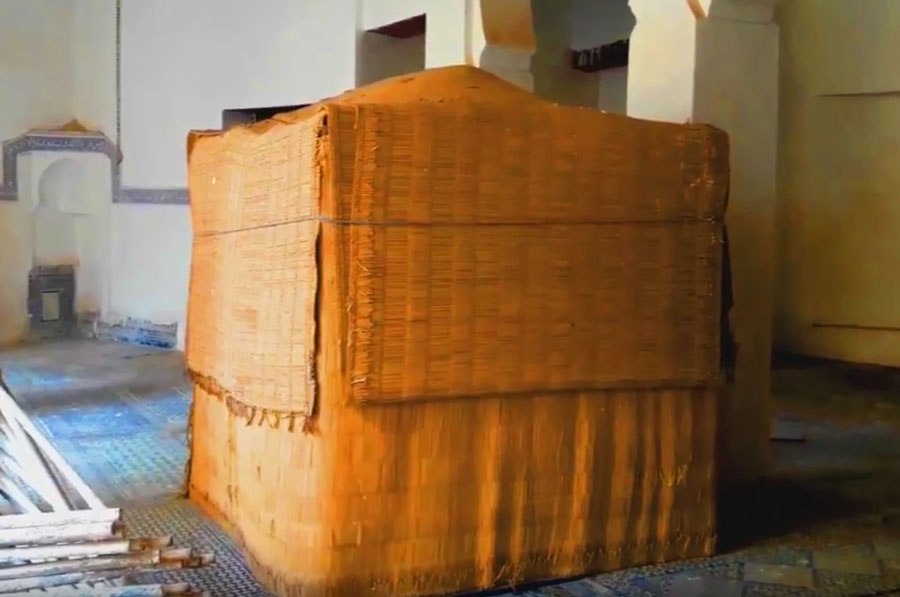


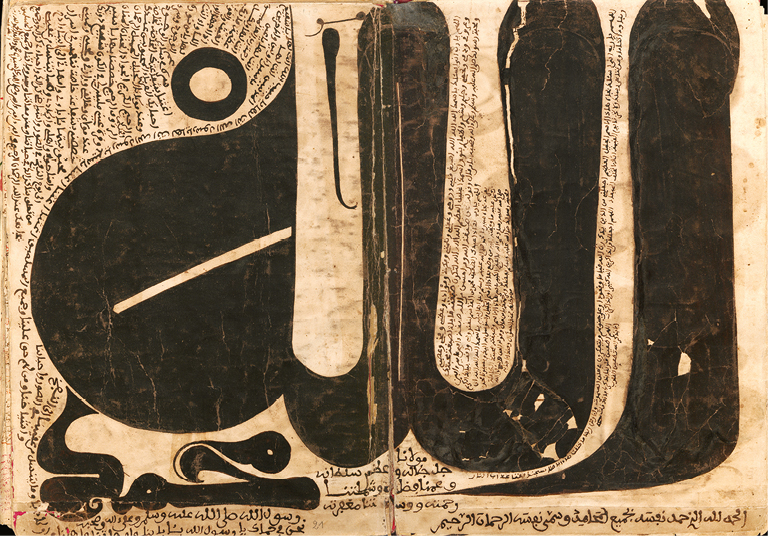
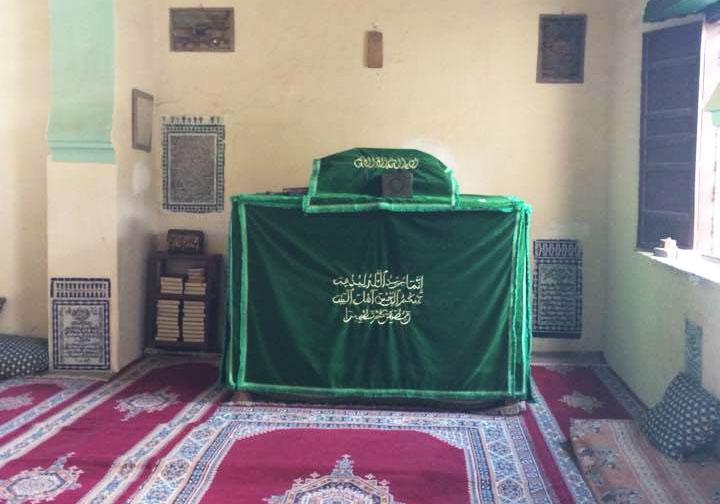


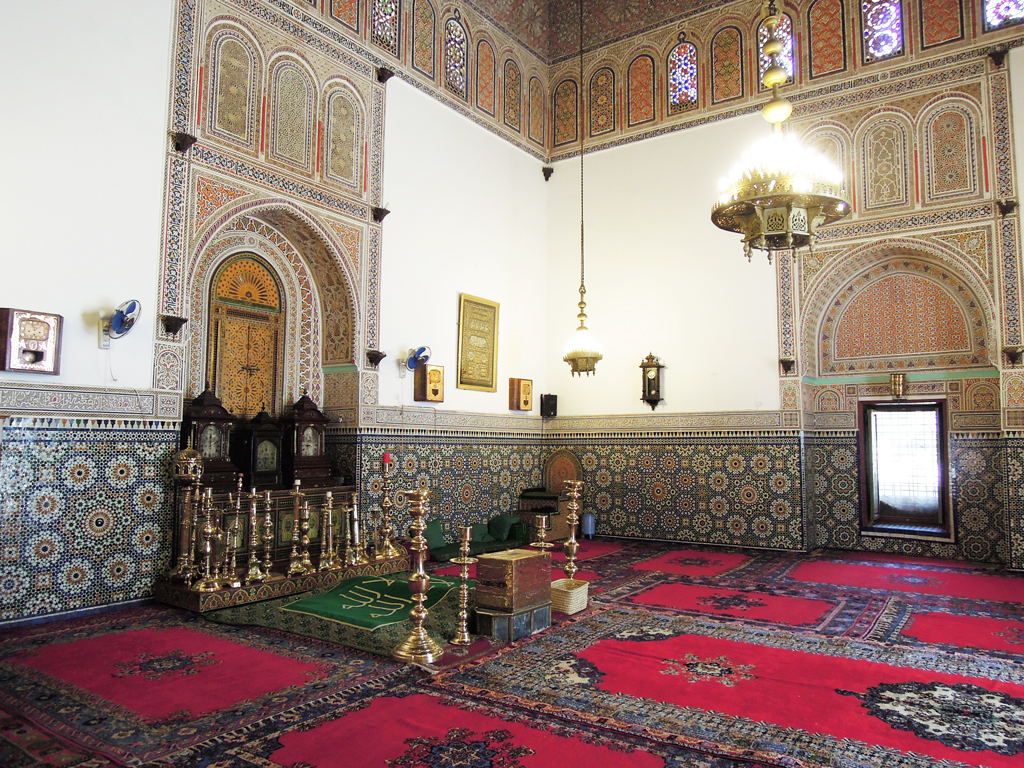





























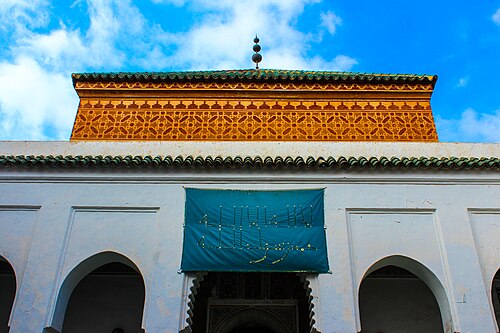





Find all our meditations on the Nur App!
Experience tranquillity through Qur'anic recitations and meditations on our Nur App and develop healthy spiritual routines to maintain your God-given Nur (light).
